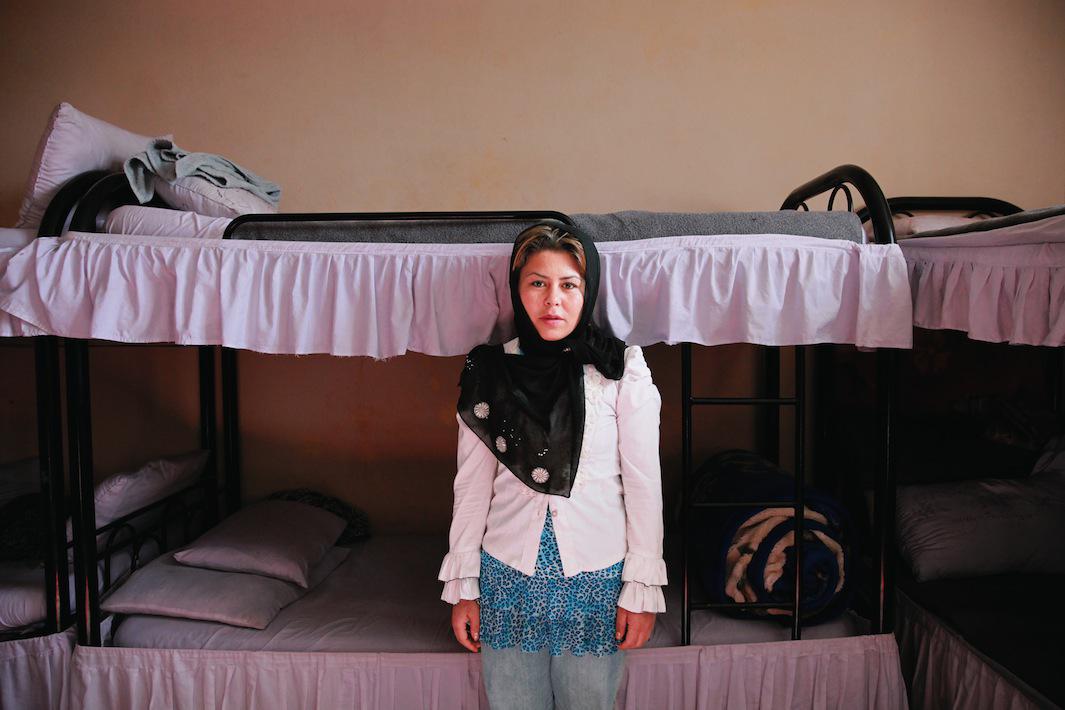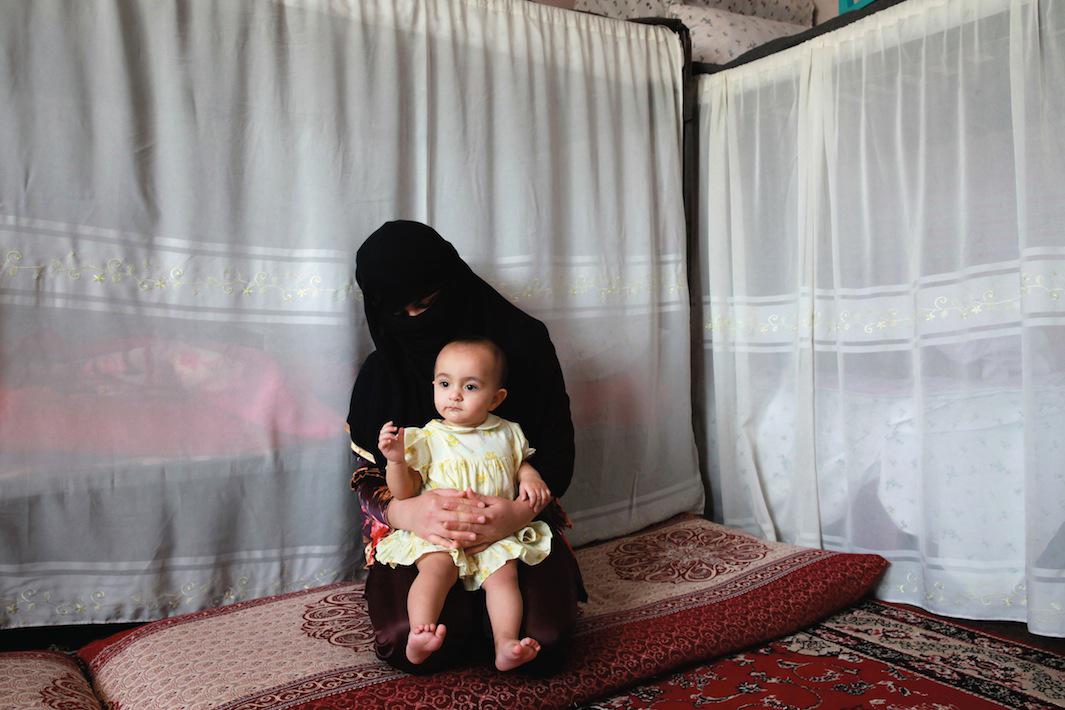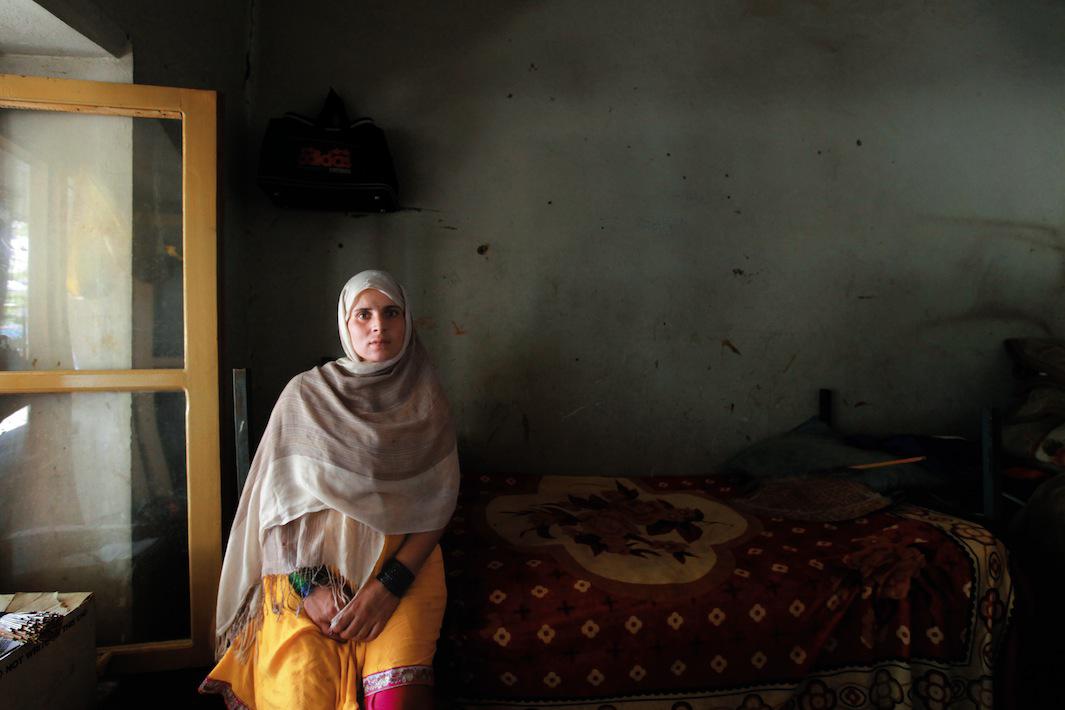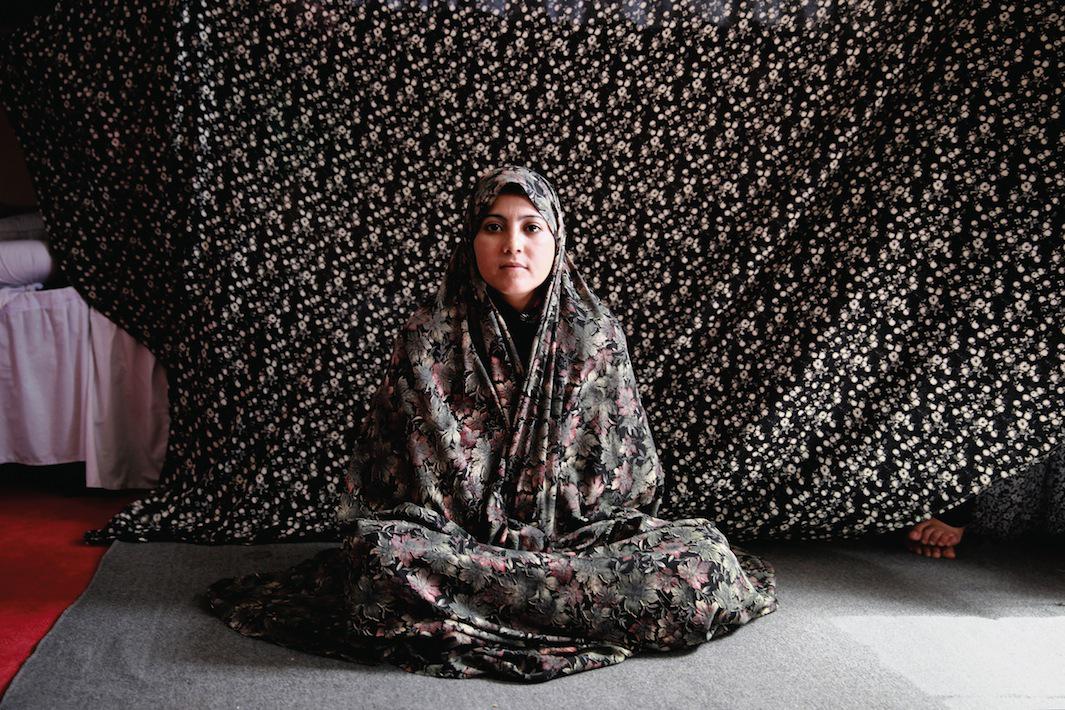Women in Afghanistan can be incarcerated for some shocking reasons: running away from a forced marriage, being the victims of rape, or being sold into prostitution, for example. In the four years she spent visiting women’s prisons across the country, Gabriela Maj heard stories of women who’d suffered more than anyone she’d ever met. In her book, Almond Garden, which is published by Daylight Books, Maj presents the stories of 50 of those women, alongside portraits she took after getting unprecedented access to the facilities where they live.
“My goal was to create images that honored this group of women as opposed to trying to illustrate the suffering they had survived,” she said via email.

Gabriela Maj

Gabriela Maj

Gabriela Maj
Before entering a prison cell, Maj would first remove her shoes. Next, she’d introduce herself to the women in the room and explain why she was there. Then, she’d ask if anyone wanted to share her story. From the beginning, there were almost always more women who wanted to speak then there was time available.
“Some of the women I spoke with were very angry and wanted to express those feelings. I was someone willing to listen. I had the impression that many women had never been asked what their story was, not by their families, not by their husbands and not by the police or the judges they had been sentenced by,” she said.
Some women Maj met ended up in prison because they suffered from anxiety or depression, and their families wanted them out of the house. Others had turned themselves in to the police voluntarily to escape abuse at home and expressed their desire to Maj to live in prison indefinitely.
But prisons in Afghanistan are no safe haven. “Women who have been abandoned by their families or whose families are unable to pay the appropriate bribes have to contend with a system in which they are completely vulnerable and powerless,” Maj said. “Incarcerated women, prison guards, and Afghans I met throughout the country frequently spoke about the sexual abuse and forced prostitution of female prisoners in Afghanistan.”

Gabriela Maj

Gabriela Maj

Gabriela Maj
In Maj’s photographs, you won’t see any prison guards, bars, or any of the other signs of prison one might see in typical photos of prison in the West. Instead, the women are often posed alone or with their children—who are often imprisoned with their mother or who are born during their mother’s incarcerations—in their personal spaces. This approach, Maj said, was intended to help portray the women she met as people first and foremost rather than as prisoners. Indeed, despite the suffering they’ve survived and the everyday injustice they’ve experienced, the women’s ability to maintain a connection to the everyday struck Maj.
“We spoke about child marriage and rape and we spoke about money and mobile phones. Somewhere in between these jarringly dissimilar threads of narrative, many of which were familiar to me, I found myself stunned in the face of the disparity between us, not on account of the contrast between our lives—there were many differences and they were significant—but ultimately because of how arbitrarily we had each been dealt our respective hands in life.”
Previously on Behold:
- What It’s Like to Be a Girl in America’s Juvenile Justice System
- These Photographs Are the Only Real Record of Canada’s Alcatraz
- Finding God in Maximum Security Prison

Gabriela Maj

Gabriela Maj

Gabriela Maj
